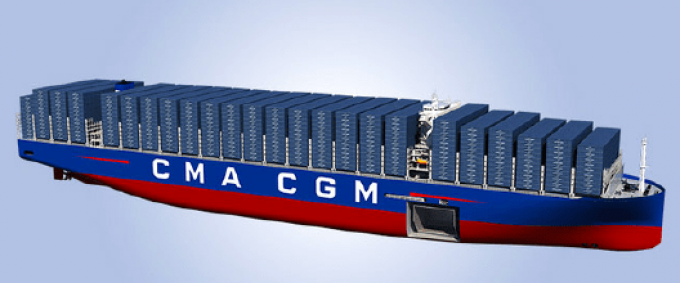Despite sourcing shifts, 'don't write-off China', says CMA CGM CCO
China cannot be written off completely from supply chains, despite tension with the US and ...

A steel cutting ceremony took place in China last week on the hulls of the first two ships of CMA CGM’s order for nine 22,500 teu LNG-powered ULCVs, featuring a potentially game-changing bow design.
Alongside similar ULCVs being constructed for MSC in South Korea, these behemoths will be the largest containerships afloat, and the first to extend to 24 containers across the weather deck.
The French carrier’s new flagships will also be the first constructed with a “bulbless” bow, as the container line ...
Volcanic disruption at Anchorage could hit transpacific airfreight operations
Macron calls for ‘suspension’ – CMA CGM's $20bn US investment in doubt
Forwarders stay cool as US 'liberation day' tariffs threaten 'global trade war'
Shippers snap up airfreight capacity to US ahead of tariff deadline
De minimis exemption on shipments from China to the US will end in May
Tighter EU import requirements proving 'a challenge' for forwarders
Looming Trump tariffs will create 'a bureaucratic monster' for Customs

Comment on this article